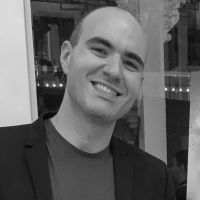Kipo and the Age of the Wonderbeasts’ Casual Diverse Queerness
Where other shows play in subtext or wait until the very end, Kipo has put its best foot forward when it comes to diverse queer representation.
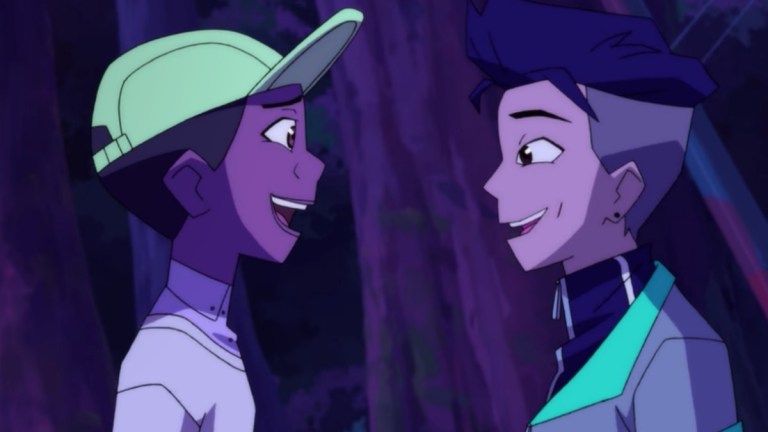
This article contains some spoilers for Kipo and the Age of the Wonderbeasts season two.
In a season one episode of the post apocalyptic children’s show Kipo and the Age of the Wonderbeasts, the main cast all experience hallucinations where they can see their purest desires made manifest. In the case of Benson, he’s the center of attention at a house party where boys in swim trunks cheer him on. It’s a not so subtle acknowledgement of Benson’s physical attraction to boys. It’s in the mind of a preteen so it’s very innocent, but it’s still more of an acknowledgement of attraction than queer audiences are used to. As an added cherry on top, during this hallucination Benson shoots rainbows out of his mouth. Glorious.
This is just one brilliant example of how children’s television has evolved in its portrayal of queer characters.
Even as recently as a few years ago, getting a confirmed queer main character on a children’s TV show was a herculean task. Most attempts were only made through subtext, perhaps confirmed by creators in an interview but never allowed to be explicitly acknowledged in the shows themselves. Much of this was down to the stricter rules put on TV meant for children which, for no good reason, decided queer people shouldn’t be seen.
Thankfully, in recent years, this has slowly begun to change , although representation hasn’t always been perfect. The Legend of Korra was one of the first big series to make two of its lead characters queer but this was only done at the very end of the series in an indirect way that had to be confirmed by the showrunners after the fact. Slow progress was made elsewhere, with series like Adventure Time confirming two of their main characters as queer—but, again, only at the very end of the series. This was followed byVoltron, which confirmed the character of Shiro was queer in its second to last season.
The biggest change for kids TV however came with Steven Universe, a series that represented a breakthrough in queer representation. After an extended first season, multiple characters began to be confirmed as queer and, as the show went on, it was allowed to center queerness more and more. By the fifth season, two queer characters even got married on screen! This opened the door for more queer representation in series such as She-Ra, which included two queer women from the start of its run and confirmed its two main characters as queer at the very end. That alone was a huge step, as the characters in question were two legacy characters from a big IP.
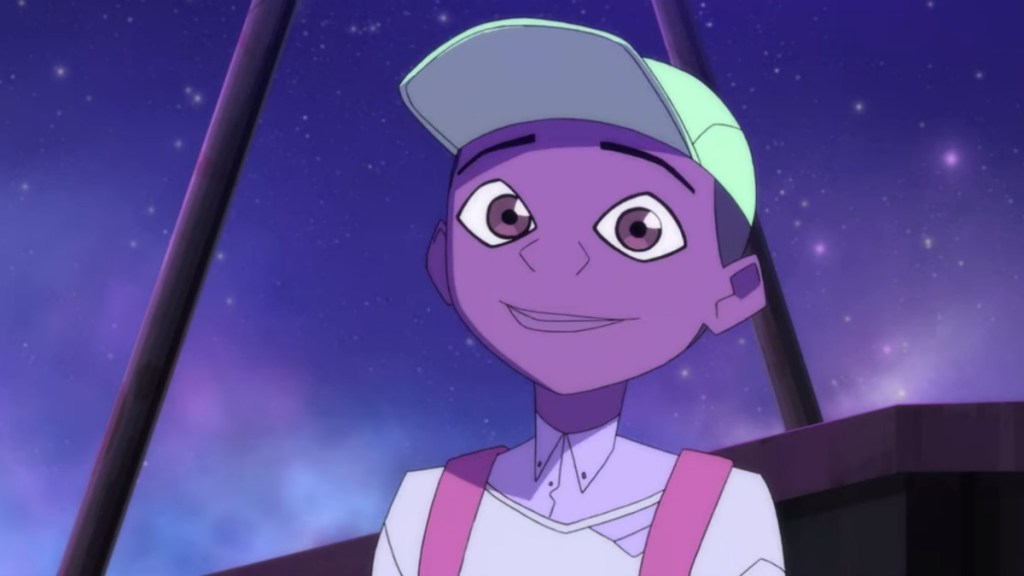
However, post apocalyptic series Kipo and the Age of the Wonderbeasts has quietly become the newest breakthrough in kids TV when it comes to queerness. Unlike all of these other shows, Kipo didn’t wait until well into its run to confirm characters as queer, nor did it only do it with rarely-seen side characters. From the first season, which premiered in January 2020, we learned that main character Benson was gay after Kipo admitted she had a crush on him.
After this, Benson says he does like her, but only as a friend, and casually tells her he’s gay. Kipo realizes she really just wants to be friends anyway and the two continue the episode and series with a deeper bond.
To actually have a character use the word “gay” is a huge step for kid’s animation. While some series have had queer characters, next to none have actually used terms like gay, lesbian, queer, bisexual, pansexual, or non-binary. To some, the distinction of using these terms may seem like a minor thing compared to the depiction of their identities, but saying it makes the representation feel more honest. It doesn’t have to hide at all; it’s out and proud. In the past, it’s felt like the absence of these terms was a way for shows to have an easy out in case the bigoted segment of the audience wanted to deny what was in front of them. Having Benson simply tell Kipo he’s gay was a seismic shift in animation and hopefully opens the doors for more queer terms to actually be said in dialogue.
Benson, who is Black, is also a rare example of a queer kid character of color, already a sparse demographic in TV as a whole let alone in animation. Benson is also a complex character with many identities; he has a happy-go-lucky personality, a love of music, a skill for cooking, and is a great friend to the rest of the cast.
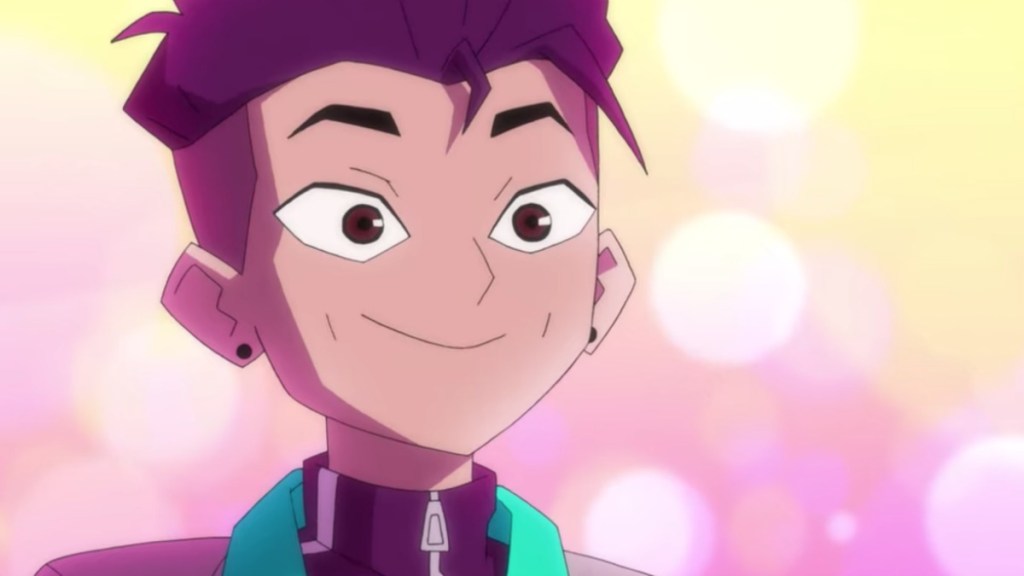
But Kipo isn’t done yet! At the end of the first season, Benson and the rest of the characters meet up with another group of humans and he’s instantly flustered by a cute boy named Troy (who is also a character of color, in this case half Asian and half Mexican, as confirmed in an interview we conducted with the executive producers). The two instantly bond over music and the show hammers home their mutual attraction by setting their scene against a soft-lit background with a romantic song featuring the lyrics, “I think I’m falling in love with you.” Kipo is not subtle and I LOVE IT.
Season two picks this right back up with more flirting between Benson and Troy, with Benson adorably awkward in his attempts to impress him. Troy eventually goes off with the Timbercats (cats who are lumberjacks, this show is wild) but not before giving Benson a kiss on the cheek. Later in the season, Benson even gets to meet Troy’s father, who he desperately tries to impress in order to score points with Troy. Troy’s dad tells Benson to stop trying so hard… but he’d love to see the two get together. A non homophobic parent? Kipo just keeps doing it!
Everything about Benson and Troy is just incredibly wholesome. Look, to get a little personal, as a pansexual man seeing all of this? It genuinely gets me a little choked up. Never before in American animation has there been a character like Benson. Someone who can say they’re gay but also get to have a crush on a boy like him who’s also gay!
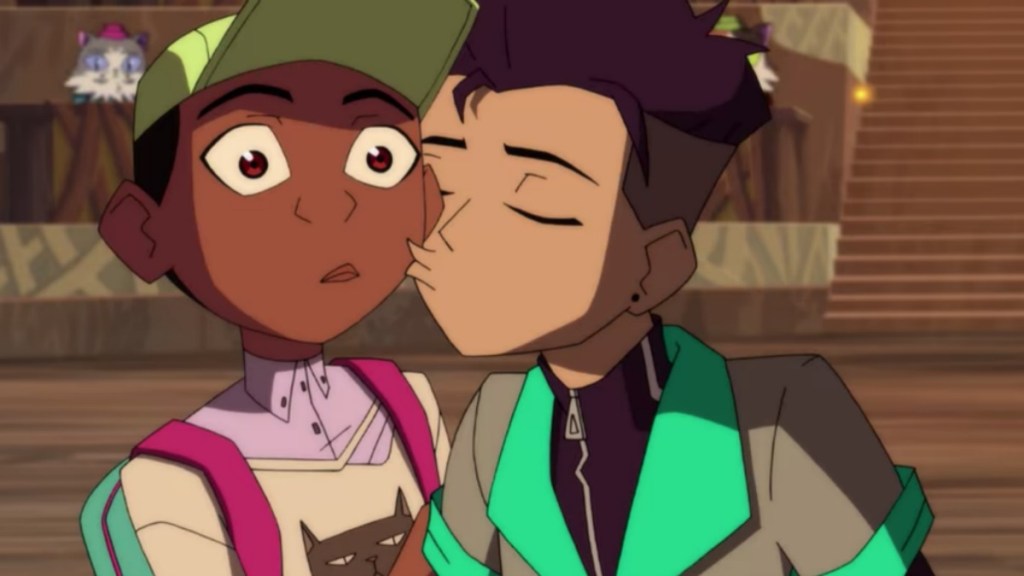
The whole relationship (or at least the attraction between the two) has had zero drama so far. It’s just two kids who are attracted to each other and it’s given the same sort of treatment straight couples have had in kids TV forever. There’s zero subtext. It’s treated as a regular thing without any of the restrictions gay characters have had before. Critically, though? Once Benson and Troy meet? Benson still gets lots of focus that has nothing to do with his crush. He still gets to have interests and storylines outside of simply liking a boy.
(It should be noted that we also need stories meant for kids that are completely focused on being queer. Those stories are just as valid as ones like Kipo, where queer identity isn’t the main focus of the plot. They’re both the types of stories queer audiences deserve more of.)
What’s great is that Kipo and the Age of the Wonderbeasts feels like it’s just beginning a very long story. There’s a lot of time for both Benson and Troy to grow and I hope the show continues so we can see it. It’s genuinely shocking how casually the show has handled its queerness and diversity and I wish the show were getting more attention for it. There are a lot of possible reasons for that and some of them sadly might be that both of these characters are people of color, which tend to not get as much attention from certain sides of fandom. Another reason might simply be that Kipo is an original series not tied to an existing brand. New original series are much less likely to be sampled by an audience than one that has some name recognition.
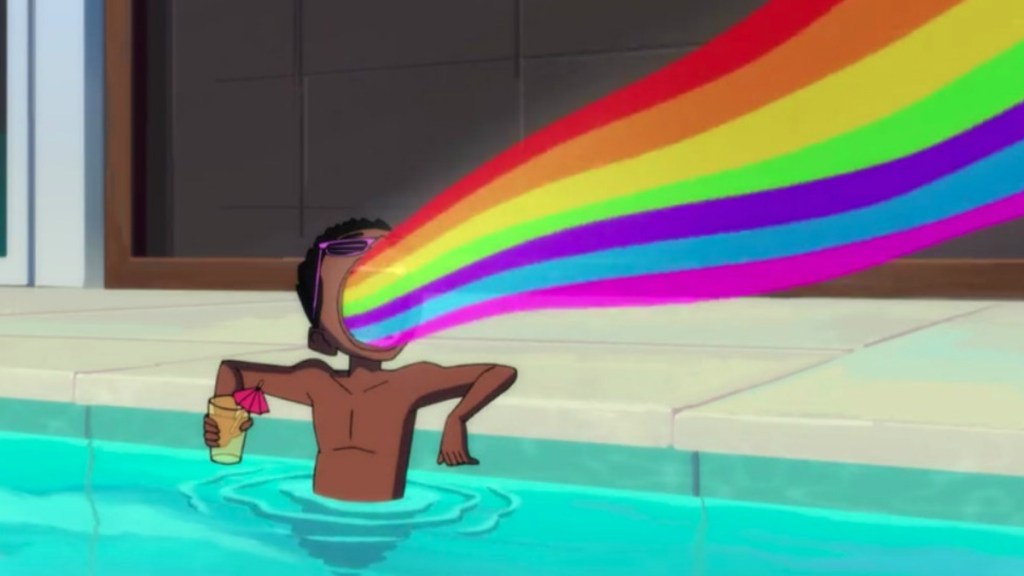
However, this show needs the support. The people at DreamWorks need to know how important Benson is and how much his relationship with Troy matters. It’s revolutionary in children’s TV and we need more of it. We need more characters who are allowed to be queer and say it. We need more characters who can have romances that are just as sweet and innocent as the types we’ve seen in Disney films for years.
It not only makes queer kids feel more seen and represented, it also makes the world better for them as well. By introducing characters like Benson and Troy in children’s shows, it helps normalize the idea of queer characters for children at a young age. This in turn will help many children grow up to be more tolerant of people who might not be like them. Perhaps most importantly, it’ll help kids who aren’t sure if they’re queer discover themselves. It’ll show them it’s okay to be queer and that there’s nothing to be ashamed of. It’s a perfectly normal thing that should be supported by everyone.
